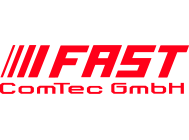Repetitively sampled time-of-flight mass spectrometry for gas-phase kinetics studies
Christopher Fockenberg, Herbert J. Bernstein, Gregory E. Hall, James T. Muckerman,Jack M. Preses, Trevor J. Sears, and Ralph E. Weston, Jr. Chemistry Department, Brookhaven National Laboratory, Upton, New York 11973-5000
An apparatus has been constructed to study radical–radical reactions in the gas phase. It consists of a tubular quartz reactor in which radicals are produced by flash photolysis using an excimer laser as light source. The composition of the gas mixture is analyzed in situ by photoionizing sampled gases using the vacuum ultraviolet emission of a hollow cathode lamp and subsequent time-of-flight mass spectrometry. A simple arrangement of grids at the entrance to the flight tube is used to interrupt the constant flux of ions by application of a combination of constant and pulsed voltages. Individual mass spectra can be taken at a repetition rate of around 20 kHz following each photolysis event.
Signal counts from a specified number of consecutive mass spectra are fed into a 2 GHz multiscaler (FAST ComTec Model 7886) and accumulated as a sampling-time-indexed series of mass spectra. This allows simultaneous observation of the concentrations of multiple transient or stable species on a millisecond time scale.
To achieve a suitable signal-to-noise ratio, signals were typically accumulated over several tens of thousands of laser shots at a pulse rate of 10–15 Hz.
© 1999 American Institute of Physics. – The full article is available from the American Institute of Physics website
